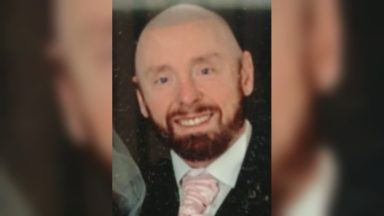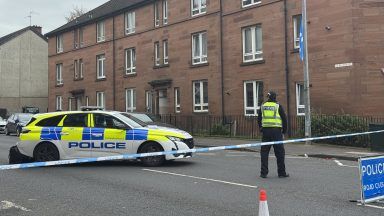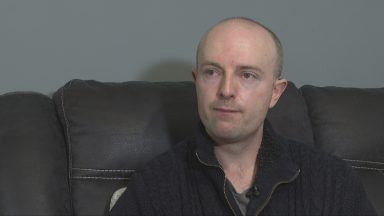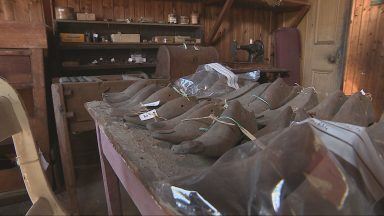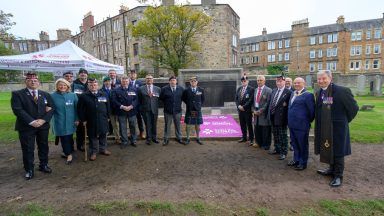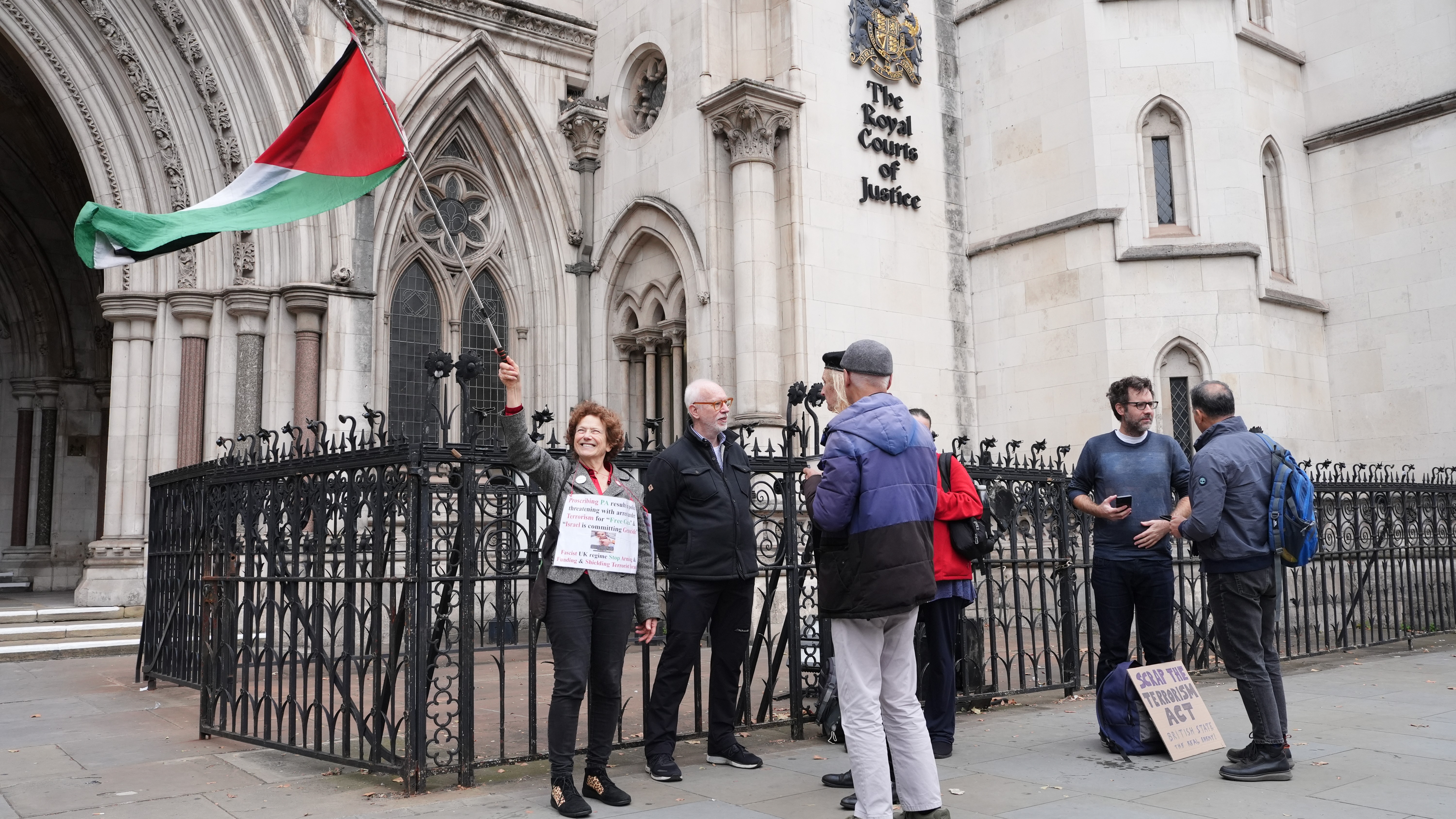Key Points
-
 Graham Anderson, 59, died after suffering a heart attack at Calachem Limited
Graham Anderson, 59, died after suffering a heart attack at Calachem Limited -
 The incident took place during the coronavirus pandemic in 2020
The incident took place during the coronavirus pandemic in 2020 -
 An ambulance took an hour and 25 minutes from the time of the first 999 call to get to his aid
An ambulance took an hour and 25 minutes from the time of the first 999 call to get to his aid -
 The 999 call was colour-coded as “teal” – the second lowest priority
The 999 call was colour-coded as “teal” – the second lowest priority -
 An FAI has concluded the death could have been avoided
An FAI has concluded the death could have been avoided -
 Five recommendations issued to the SAS since implemented
Five recommendations issued to the SAS since implemented -
 The Scottish Ambulance Service issued an apology
The Scottish Ambulance Service issued an apology
A man died after the Scottish Ambulance Service “lost sight” of him for an hour and did nothing to organise treatment after an initial call for help, an inquiry has found.
Graham Anderson, 59, a stores co-ordinator from Stirling, died in an office in Grangemouth on May 1, 2020.
Gatehouse staff at the complex rang 999 at 7.57am and spoke to a handler at the Scottish Ambulance Service’s South Queensferry call centre, however, an ambulance did not arrive on the scene until 9.22am.
Sheriff Keith O’Mahony found Mr Anderson’s death of Graham might have been avoided if an employee in the ambulance service control room which received 999 calls had alerted a remote paramedic sooner.
He said a “reasonable precaution” could have been taken that might “realistically” have resulted in the death being avoided.
The report also highlighted “defects” in the Scottish Ambulance Service’s systems of working in which contributed to Mr Anderson’s death.
‘What seemed like a lifetime’
Mr Anderson, from Stirling, was found lying face down in the office at CalaChem.
A colleague who discovered him between 7.50 to 7.55am immediately called for assistance, and gatehouse staff at the complex rang 999 at 7.57am and spoke to a handler at the Scottish Ambulance Service’s South Queensferry call centre.
Mr Anderson, who was described as “ashen” and “clammy” and had pain in his chest and arm but was still conscious and breathing, was given oxygen and put in the recovery position by on-site first responders.
Three more 999 calls were made to the Scottish Ambulance Service from the CalaChem site, one at 8.34am that didn’t properly connect, another just before 8.35am, and one at 9.18am.
An ambulance didn’t arrive on the scene until 9.22am, and there was then a further wait while the crew donned PPE before attending to Mr Anderson, who was by then in cardiac arrest.
He was formally pronounced dead an hour later. His death was ruled as coronary atheroma and thrombosis.
One of two responders who went to Mr Anderson’s aid, told the probe into his death in February 2024 that the amount of time it took the Scottish Ambulance Service to arrive “seemed like a lifetime”.
He said: “Numerous calls were made to the ambulance service.
“We waited a long time. We went through two or three cylinders of oxygen. Some of our colleagues we went back to the [on site] fire station for more.
“It seemed like a lifetime.”
Colour call system
The inquiry heard that during the early part of the coronavirus pandemic, the Scottish Ambulance Service had introduced a new system to deal with incoming 999 calls.
Those rated less urgent were colour-coded “teal” – the second lowest priority – and callers were told to expect a return call from someone who would work out how best to help them.
In the first 999 call regarding Mr Anderson, a member of gatehouse staff told an ambulance service call handler that the 59-year-old had “passed out”, but as he wasn’t personally with the casualty had answered “I don’t know” to follow-up questions such as; “is his breathing completely normal?” “Is he completely alert?” and “Is he changing colour?”
The call handler then phoned one of the first-responders who was with Mr Anderson directly.
The first responder told the call handler Mr Anderson was on oxygen and his colour was “coming back a bit”, had no history of heart problems, but was on medication for cholesterol.
The Scottish Ambulance Service computer system colour-coded the call as “teal”.
The first responders with Mr Anderson were told to expect a further call from the ambulance service “to get a bit more information while we work out how best to help him”.
The inquiry heard it then appeared on a spreadsheet in front of a qualified advanced paramedic, whose job was to allocate it to a remote-working paramedic who would phone and speak to those with Mr Anderson.
The woman said, at the time, the system was that she would manually select a free paramedic, then ring them to give the job.
She admitted it had taken 60 minutes for her to phone the paramedic and only realised the case was outstanding when a manager queried why the call was “still sitting”.
She immediately rang the remote paramedic to tell him he had been allocated – at 9.10am – more than 70 minutes after the first call.
‘Overlooked’
The probe, led by Sheriff Keith O’Mahony, ruled that Mr Graham had been “overlooked” by the Scottish Ambulance Service.
Sheriff O’Mahony set out five recommendations to the SAS following the tragedy, including the introduction of a priority queue for triage cases, call recording for all clinicians, the APC (Advanced Paramedic Coordinator) to telephone the RAP (Remote Advanced Paramedic) before the case is allocated for triage.
The report also recommended the introduction of another member of staff to manage the non-clinical aspects of the system, and for APC’s to be moved to a different room within the control centre to reduce distractions.
All recommendations have since been implemented and have led to considerable changes in the services’ systems of work.
In his report Sheriff O’Mahony offered condolences to the family of Mr Anderson, who said they had given evidence “with great dignity” during the inquiry.
Speaking in his conclusion, he said: “I offer genuine and sincere condolences to the family of Mr Anderson. I recognise how difficult some aspects of the evidence must have been for them. I commend them for their dignity throughout this process.”
A Scottish Ambulance Service spokesperson said: “This is a tragic case and we would like to apologise again to Mr Anderson’s family.
“An investigation into the circumstances relating to the delay in responding to Mr Anderson was conducted and completed prior to this inquiry,with all actions identified being implemented. We would like to extend our deepest sympathies to the family for their loss.”
Procurator Fiscal Andy Shanks, who leads on fatalities investigations for COPFS said: “The death of Graham Anderson occurred in circumstances giving rise to significant public concern and as such a discretionary Fatal Accident Inquiry was instructed. The sheriff’s determination is detailed and notes reasonable precautions that could have been taken to avoid Mr Anderson’s death.
“The FAI followed a thorough and comprehensive investigation by the Procurator Fiscal who ensured that the full facts and circumstances of Mr Anderson’s death were presented in evidence.”
Follow STV News on WhatsApp
Scan the QR code on your mobile device for all the latest news from around the country


 Central Scotland News Agency
Central Scotland News Agency

